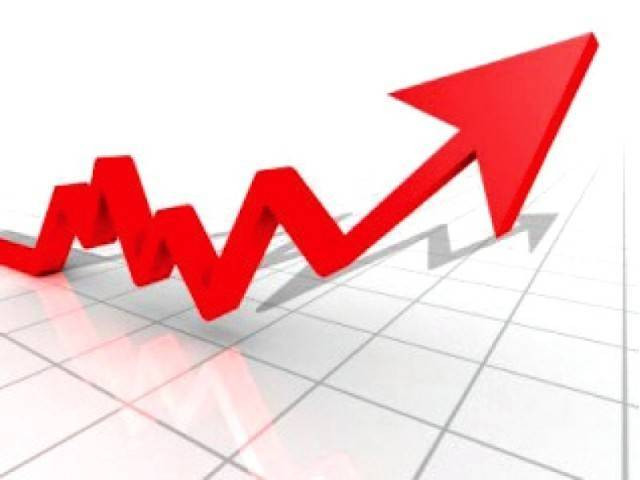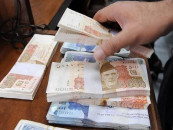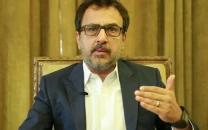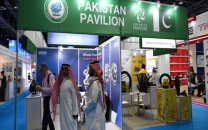Stagflation likely to hit Pakistan’s economy soon
Govt must improve economic management to avoid high inflation, low growth

Govt must improve economic management to avoid high inflation, low growth.
PHOTO: FILE
Be that as it may, the current downturn as well as projected key economic indicators suggests that the question is not all that impertinent.
Generally, economies face a trade-off between growth and employment on the one hand and inflation on the other. An upsurge in growth drives up aggregate demand and generates jobs, which leads to increase in the general price level. By contrast, downswings in growth dampen aggregate demand and reduce employment, which brings down prices.
Hence, governments often have to choose between high growth and low inflation. At times, however, this trade-off is not available. The economy faces dwindling growth rates and shrinking job opportunities coupled with higher prices. The unenviable combination is called stagflation. Stagflation is generally put down to supply-side inflation, which reduces aggregate demand and forces firms to cut back on output, resulting in lay-offs. Thus, lower output and higher prices co-exist and feed on each other.
The economy that the Pakistan Tehreek-e-Insaf (PTI) government inherited in August 2018 was a mixed bag. In FY18, a sound economic growth was underpinned by large fiscal and current account deficits of 6.8% and 5.7% of gross domestic product (GDP) respectively, a deteriorating exchange rate, falling foreign exchange reserves and creeping inflation.
However, through a series of acts of omission and commission, the new government made matters worse. To handle the external deficits, the government relied exclusively on letting the rupee depreciate through a hands-off approach.
The logic behind adopting a free-float exchange rate rested on the premise that an overvalued rupee was the principal cause of the massive trade deficit, particularly slow export growth, therefore, depreciation by itself will correct the trade balance. The logic has not worked as in the first five months of the current fiscal year (Jul-Nov 2018), exports registered a meagre growth of 0.3% compared with the 12.4% growth recorded in the corresponding period of previous year.
In value terms, exports in Jul-Nov 2018 were $9.85 billion compared with $9.82 billion in the corresponding period of 2017.
Imports in Jul-Nov 2018 were $22.74 billion compared with $22.11 billion in the corresponding period of 2017, thus registering a year-on-year growth of 2.84%. In Jul-Nov 2017, imports had registered a year-on-year growth of 24.5%. The deceleration in import growth may be a sign of economic slowdown.
Trade deficit in Jul-Nov 2018 was $12.89 billion compared with $12.28 billion in Jul-Nov 2017, thus registering a 4.96% growth. In all, the current account deficit of 4.8% of GDP was registered in Jul-Nov 2018, which was only marginally better than the deficit of 5% recorded in the corresponding period of previous year.
The slight improvement in the external balance is undergirded by growth in remittances - from $8.02 billion in Jul-Nov 2017 to $9.02 billion in Jul-Nov 2018. This shows that the depreciation has not been effective in arresting the external deficits.
Double-edged sword
The exchange rate adjustment is a double-edged sword which cuts either way. While depreciation may push up exports depending on the price elasticity of demand, it may also ratchet up domestic prices by restricting imports and raising the cost of inputs and raw material.
In the case, the inflationary pressures stoked by depreciation were exacerbated when the present government pushed through parliament amendments to the Finance Act 2018, referred to as the mini-budget, whereby income tax rates and regulatory duties (indirect taxes) were increased and development spending cut.
Subsequently, gas and electricity prices were also raised. As a result, the average CPI inflation, which was 3.9% at the end of FY18, increased to 6.2% in Jul-Nov 2018. Another mini-budget incorporating similar measures is likely later this month.
Increased inflationary pressures tell upon both consumers and businesses. Productivity of the economy goes down as resources are diverted to speculative or non-productive activities. The cost-push inflation, as opposed to demand-pull inflation, results in deceleration in the real output, which adversely affects the level of employment.
To cope with growing inflationary pressures, the State Bank of Pakistan (SBP) jacked up the policy rate in successive Monetary Policy Statements (MPS). In Oct-Nov 2018 MPS, the policy rate was enhanced by one percentage point to 8.5%, which was further enhanced by 1.5 percentage points to 10% in December 2018.
Consumers brace for higher inflation in FY19
This shows that exchange rate management, which has allowed the domestic currency to depreciate, and the MPS, which is aimed at driving up the currency value through higher interest rates, are working for cross-purposes. Hence, the monetary policy-induced possible reduction in inflation has been offset by the depreciation-induced spike in inflation. As always, a contractionary monetary policy is likely to reduce the real output.
Outlook
Not surprisingly, some of the leading international institutions have projected an economic slowdown combined with an increase in inflation rate for Pakistan. In the World Economic Outlook released in October 2018, the International Monetary Fund (IMF) has projected economic growth to recede to 4% in 2019 and further to 3.5% in 2020.
In the April 2018 edition of the outlook, the economy was projected to grow 4.7%. The fund has also projected 7.5% inflation rate in 2019. The World Bank projections put 4.8% economic growth rate and 8% inflation rate for FY19.
The effects of the policy glitches have been compounded by the failure to adopt an unequivocal stance on seeking IMF assistance. When the present government took office, it was widely believed that owing to a precarious balance of payments position, it would soon go to the IMF, just as its predecessors had done.
IMF projects inflation rate to hit 14% by June
While the government has not ruled out going back to the multilateral donor – it has been in contact with the fund, it is not clear when it will formally strike a credit agreement. The dilly dallying over seeking IMF assistance, together with the obsession with accountability, has created uncertainty.
According to eminent economist Keynes, business expectations are exceedingly important for investment and growth. Expectations are both rational and subjective or irrational depending on social and political atmosphere. The present political environment does not seem to be much conducive for investment, to say the least.
While it may be premature to remark that stagflation is round the corner, in case the economic management does not improve, the unenviable economic situation will be difficult to avoid.
Stagflation stumps even the most astute of policymakers. The standard recipe for low growth is fiscal and monetary expansion, while that for high inflation is fiscal and monetary contraction. Stagflation makes both sets of policies less efficacious.
Expansionary policies in the face of increasing prices will stoke inflation, while contractionary policies in the face of contracting growth will put further brakes on economic expansion. Let’s hope the economy does not sink into stagflation.
The writer is an Islamabad-based columnist
Published in The Express Tribune, January 7th, 2019.
Like Business on Facebook, follow @TribuneBiz on Twitter to stay informed and join in the conversation.



















COMMENTS
Comments are moderated and generally will be posted if they are on-topic and not abusive.
For more information, please see our Comments FAQ